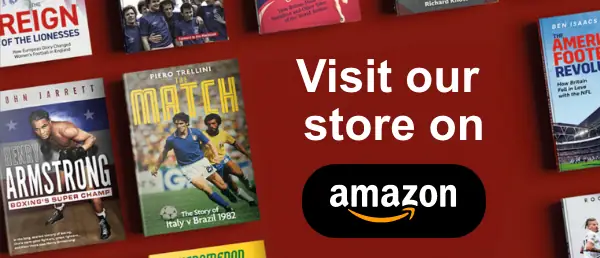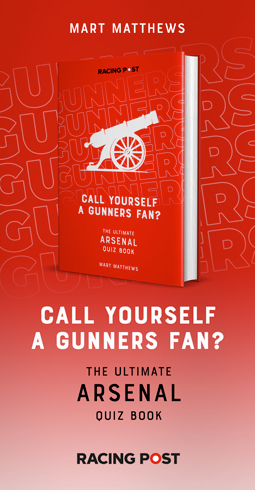
The Nostalgic Charm of Sticker Albums
The Nostalgic Charm of Sticker Albums
This article was published in The Daily Telegraph on 14th October 2013, and is reproduced with the kind permission of its author Sam Rowe.
Back in the early 90s – when Jack Wilshere was still in Pampers, and players on the FIFA video game looked like Lego men - a craze that had plagued the nation’s playgrounds for well over a decade and enchanted every football-loving child in equal measure, was reaching its zenith. Spawning a generation of pint-sized wheeler-dealers, it was a world where self-adhesive stickers were currency, the "shiny" was king and the gruff, gargoyle faces of Iain Dowie, Peter Beardsley and Steve Ogrizovic were as addictive as heroin-laced Calpol. This was the age of the football sticker, and it was a bona fide cultural phenomenon.
So much so, that market surveys of the late 1980s and early nineties showed that over 90 per cent of nine to eleven-year-old boys indulged, loading the tills of the local newsagent and pushing their long-suffering parents to the brink of bankruptcy, merely to fill some rectangular spaces in a staple-bound pamphlet.
Football stickers are synonymous with Panini, a newspaper distribution business started by the Panini brothers in Modena, Italy in the mid-forties. Its first football collections were launched in 1961, but it wasn't until 1978, and the release of a sticker album tied to the World Cup in Argentina, that the phenomenon of collecting, trading, stealing and sticking really took hold in the UK.
Though no longer quite at its Nineties peak - kids have many other distractions these days - sticker books are still big business today. Panini prints over a billion stickers every year (though its range extends well beyond football to include Peppa Pig, Hello Kitty and One Direction albums) and Topps, which has owned the rights to Merlin since 1995, is this year celebrating 20 seasons of its official Premier League sticker collection.
As with the on-field discipline from which it is inspired, sticker collecting is undoubtedly a young man’s game. Sure, you can find a sprinkling of middle-aged obsessives reluctant to kick the retro habit, with the rise of online swap shops facilitating such a thing (after all, grown men hanging around playgrounds negotiating with young boys tends to be frowned upon), but sticker collecting is one for the boys. Today's cards, sadly, have lost the nostalgic charm of the Eigthies and Nineties stickers - they're more colourful and garish now, but more than that, the faces of the players are not nearly as appealing. Acquiring stickers featuring the preened, perma-tanned faces of modern-day millionaire footballers will never stir the same raw emotion of pressing down the grizzled face of Martin Keown or Stig Inge Bjørnebye.
“Football’s different now,” admits Adam Carroll-Smith, author of a new book, Six Stickers: A Journey To Complete An Old Sticker Album. “Daniel Agger is a horrendously attractive man, and he’s a centre back! By rights, his face should be smashed into hundreds of bits. Back then you had Iain Dowie and his Picasso face – a nose where his ear should be and eyes by his mouth – nobody looks like that in football any more.”
Like most, the 29-year-old writer has fond memories of his collecting days and for years dazzled anyone who’d listen with tales of his sacred album of ’96, the only one he ever completed. Or so he thought, until an inspection of the book in his loft revealed it was actually half a dozen shy. Instead of admitting defeat or searching for the missing stickers online, Carroll-Smith embarked on a quest of mad obsession – to track down the six players whose stickers he was missing and take their pictures for the album with his own camera.
“I did a search for Phillipe Albert in Belgium,” says Carroll-Smith, on the former Newcastle defender, “and I found a P. Albert in this tiny Belgian village. So I got on a ferry to France, drove to Belgium, got to this address, knocked on the door and… no one was in. It was one of those times I thought, ‘What am I doing with my life?’”
Though farcical, Carroll-Smith's story is also a romantic ode to the beautiful game of yesteryear. His affinity with his stickers, some 17 years on, is symbolic of the dedicated football supporter's plight: the lost hours, the vast financial outlay, the setbacks and the frustration, all of which are tolerated because of a deeper love for the funny looking men in the photographs.
“The exhilaration and worth you attribute to some of these stickers absolutely dwarfs the financial figure,” he affirms. “Anyone can support Manchester United, but it’s so much better to be a Bury or Aldershot fan, because you’re suffering for it and investing all these fruitless hours. So when you do see an away win at some tin-pot club, it means so much more.
“Even my now completed album, if I sold it on eBay I’d probably get, what, a tenner? Ultimately, it probably is pointless and stupid, but then, what isn’t?”
Click here for more information on Six Stickers.


